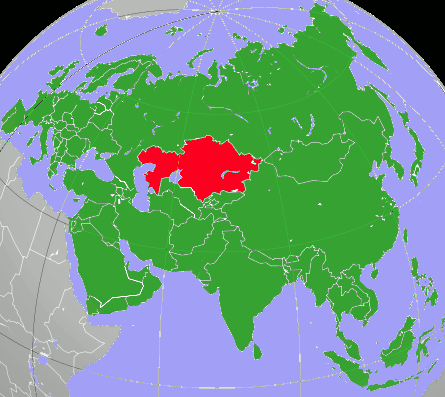
Circle the area on this map

B. The Baikonur Cosmodrome is the world's first and largest operational spaceport. Both the first artificial satellite, Sputnik 1, and the first man in space, Yuri Gagarin, were launched from Baikonur. The facility was built by the old Soviet Union in the 1950s and is now leased to Russia by Kazakhstan’s government.
A. While Soviet leaders backed the Communists who won China’s civil war in 1949, China remained independent, and the two nations became rivals and even fought each other in 1969 over a border dispute.
D. Kazakhstan is in the heart of the Great Steppe, vast area of grassland that stretches from Romania and Moldova through Ukraine, Russia, Kazakhstan, Xinjiang, and Mongolia to Manchuria. A steppe is characterized by grassland plains without trees apart from those near rivers and lakes. The prairie of North America is an example of a steppe.
A. At its height in 1920, the British Empire controlled 23.84% of the world’s land area. The Mongols ruled 16.11% of the land in the 13th century, while the Russians controlled 15.31% in 1895, including what is now Kazakhstan.